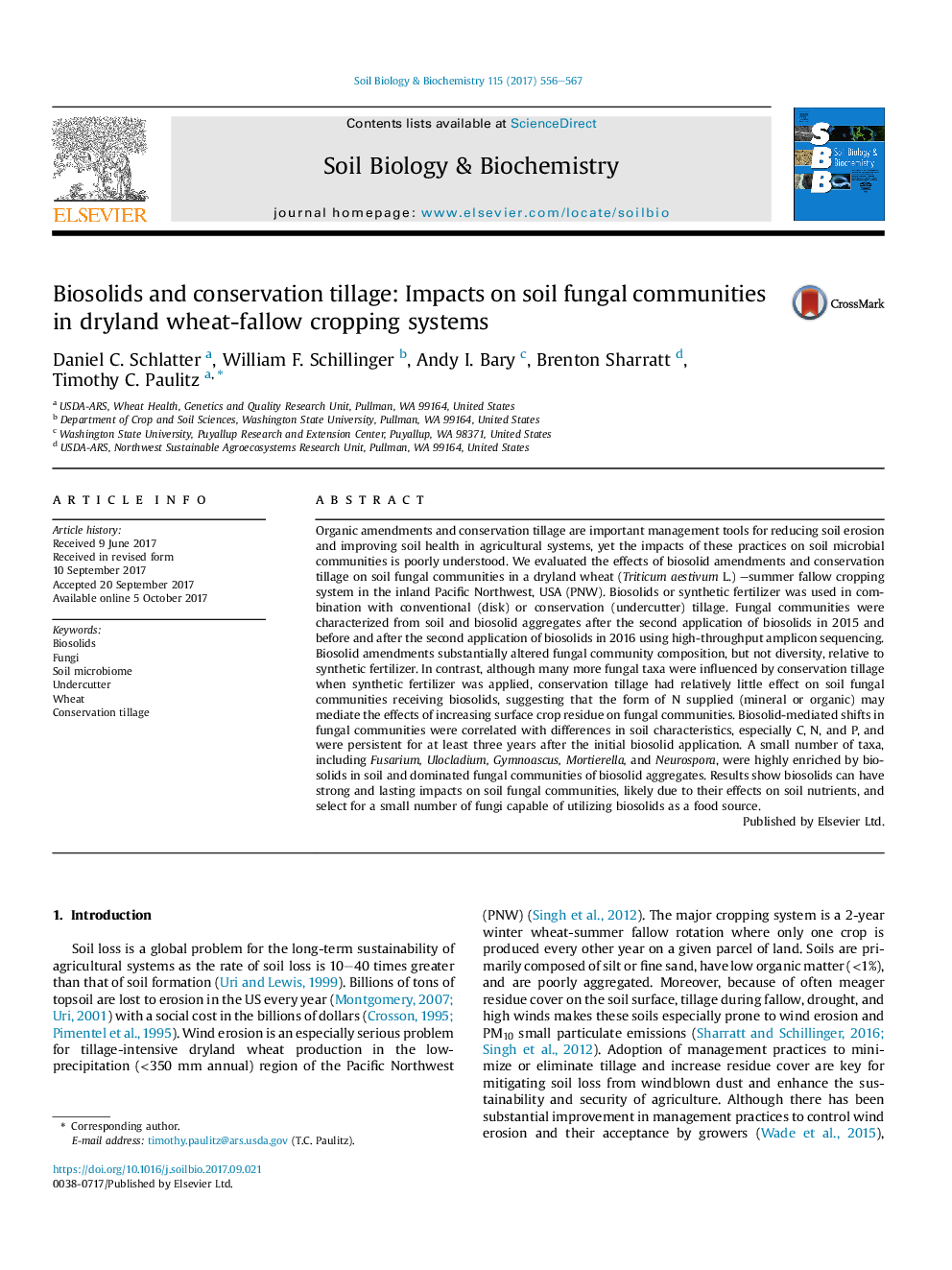| Article ID | Journal | Published Year | Pages | File Type |
|---|---|---|---|---|
| 5516277 | Soil Biology and Biochemistry | 2017 | 12 Pages |
â¢Biosolids applied to dryland wheat have significant effects on fungal communities.â¢A small number of taxa were highly enriched by biosolids application.â¢Effects of biosolids were persistent for three years after the initial application.â¢The type of tillage had small effects on fungal communities.
Organic amendments and conservation tillage are important management tools for reducing soil erosion and improving soil health in agricultural systems, yet the impacts of these practices on soil microbial communities is poorly understood. We evaluated the effects of biosolid amendments and conservation tillage on soil fungal communities in a dryland wheat (Triticum aestivum L.) -summer fallow cropping system in the inland Pacific Northwest, USA (PNW). Biosolids or synthetic fertilizer was used in combination with conventional (disk) or conservation (undercutter) tillage. Fungal communities were characterized from soil and biosolid aggregates after the second application of biosolids in 2015 and before and after the second application of biosolids in 2016 using high-throughput amplicon sequencing. Biosolid amendments substantially altered fungal community composition, but not diversity, relative to synthetic fertilizer. In contrast, although many more fungal taxa were influenced by conservation tillage when synthetic fertilizer was applied, conservation tillage had relatively little effect on soil fungal communities receiving biosolids, suggesting that the form of N supplied (mineral or organic) may mediate the effects of increasing surface crop residue on fungal communities. Biosolid-mediated shifts in fungal communities were correlated with differences in soil characteristics, especially C, N, and P, and were persistent for at least three years after the initial biosolid application. A small number of taxa, including Fusarium, Ulocladium, Gymnoascus, Mortierella, and Neurospora, were highly enriched by biosolids in soil and dominated fungal communities of biosolid aggregates. Results show biosolids can have strong and lasting impacts on soil fungal communities, likely due to their effects on soil nutrients, and select for a small number of fungi capable of utilizing biosolids as a food source.
